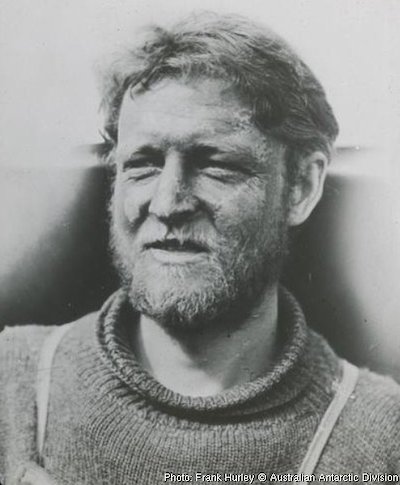Cecil Thomas Madigan
AAE position: Meteorologist
In their own words
At 3.00am I was awakened by something striking me on the head. I looked out of the sleeping bag and found that the tent had fallen in on us. The cap was gone, and one side of the tent was split from top to bottom. Luckily we had kept our Burberrys in case of accidents … When daylight came the tent was found to be hopelessly ruined …
— Madigan, describing the destruction by 130 km/h winds of his sledging party’s tent in September 1912
Madigan, born in 1889 in Renmark, South Australia, graduated in mining engineering at the University of Adelaide, where he came under the notice of Douglas Mawson. He won a Rhodes Scholarship to study at Oxford, but was granted a deferral to enable him to join the AAE as a meteorologist.
Madigan was meteorologist throughout his two years at Cape Denison. His meticulous records and his subsequent research paper on Cape Denison meteorology (1929) remain an important foundation for Antarctic weather research. He led a sledging party on to the Antarctic plateau in the spring of 1912, and took charge of the Eastern Party in the 1911–12 summer during which 400 km of the King George V Land coast were mapped.
Madigan led the group which remained behind to wait for the return of Mawson’s Far Eastern Party, and was preparing to mount a search when Mawson staggered back alone. During the second year, as well as continuing with his weather observations, he was also in charge of the sledging dogs.
Madigan managed to complete a term at Oxford in 1914 before the outbreak of World War I, when he joined the Royal Engineers, serving in France where he became a captain in 1916. Returning to Oxford after the war, he took first class honours in geology and representing the university in rowing and boxing.
In the Sudan in 1920, Madigan had his first experience of desert geology — an interest he was to continue back in South Australia from 1922. As a geology lecturer at the University of Adelaide, he became an authority on the geology and geography of central Australia. His research domain took in Lake Eyre, the MacDonnell Ranges and the Simpson Desert, which he crossed in 1939. His experiences were recounted in the popular book Crossing the dead heart, published in 1946.
Madigan encouraged students in practical aspects of geology — mining, engineering and economics. He used aircraft to for large-scale geological surveys in 1929, and pioneered the use of mobile radios, using them to broadcast via the ABC from his desert camps.
After a two-year stint as a wartime military engineering instructor, Madigan resumed university teaching in Adelaide. He died suddenly in 1947, aged 57.

